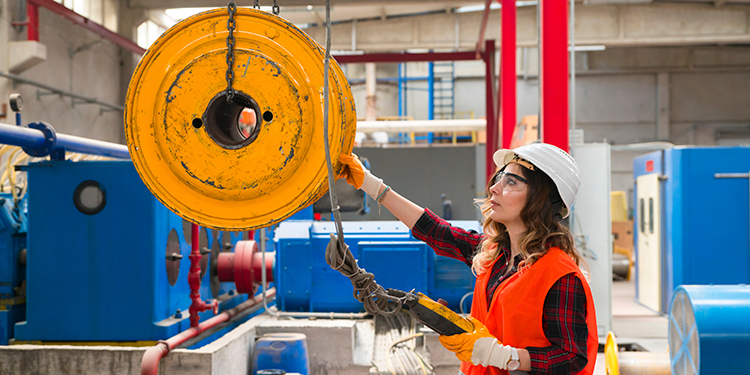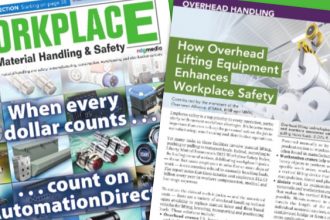For The Safest Operation, Ensure Overhead Crane And Hoist Operators Meet These Qualifications

To maximize efficiency and ease of operation many cranes and hoists are designed to be operated intuitively, with wireless remote controls (utilizing radio or infrared signals to relay function instructions to the system) or wired, push-button pendants (also referred to as a pendant stations). Although they are engineered for effortless use, that does not mean anyone within a facility should be permitted to operate this overhead equipment. On the contrary, only those personnel who meet the stringent requirements of ASME B30.20: Safety Standard for Below-the-Hook Lifting Devices and OSHA 1910.179 (b)(8): Overhead and Gantry Cranes should be allowed to use these systems.
Among the requirements, authorized personnel must:
- Demonstrate proficient verbal and written communication skills.
- Submit to safety, drug, and other mandates necessitated by the system’s manufacturer and/or owner.
- Adhere to health and safety guidelines established by the system’s manufacturer and/or owner.
- Be able to distinguish colors (if required for the task).
- Receive classroom and hands-on training on crane operation principles and methods, such as rigging; hand signals; starting, stopping and controlling loads; do’s and don’ts for safe operation; and more.
- Not have evidence of physical restrictions, be prone to seizures, be emotionally unstable, or have any other issue that could create a hazard for the crane and hoist operator or facility personnel.
- Be familiar with all parts of the crane and hoist and have thorough knowledge of their control functions and movements.
Additionally, while not required of authorized crane and hoist operators, there are several recommended best practices that further ensure operational safety. These include:
- Ensure that operators understand the equipment they are using and follow manufacturer’s procedures as detailed in the manual.
- Verify that operators are familiar with standard rigging practices.
- Require daily inspections be performed by the operator prior to the start of the first shift, or prior to the first use of the crane during the shift.
- Confirm that crane operators, rigging personnel, signal persons, and maintenance personnel know the location, function, and proper operation of disconnect switch for the main runway conductor for all cranes.
- Develop and document special hand signals as needed for special crane operations.
Want more details about the safe operation of cranes? The Crane Manufacturers Association of America (CMAA), offers CMAA Specification 79: Crane Operators Manual, and CMAA Specification 80: Below-the-Hook Lifting Device Operator’s Manual.



